Come join us now, and enjoy playing your beloved music and browse through great scores of every level and styles!
Can’t find the songbook you’re looking for? Please, email us at: sheetmusiclibrarypdf@gmail.com We’d like to help you!
Table of Contents
Donna Summer Hot Stuff Sheet Music
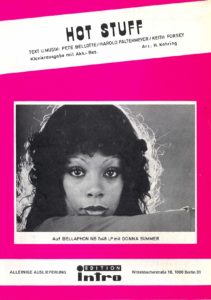
Best Sheet Music download from our Library.

Please, subscribe to our Library.
If you are already a subscriber, please, check our NEW SCORES’ page every month for new sheet music. THANK YOU!
Donna Summer: The Queen Who Ruled the Decade and Beyond
Donna Summer was more than a voice; she was a force of nature. Born LaDonna Adrian Gaines, she became the undisputed “Queen of Disco,” a title that, while accurate, often obscures the astonishing breadth of her talent. Her powerful, multi-octave voice—a instrument of remarkable agility, warmth, and raw power—could convey ecstasy, despair, devotion, and liberation, often within the same song. She was the defining voice of a musical revolution, a pioneer of electronic music, and an artist whose influence resonates through pop, dance, and R&B to this day.
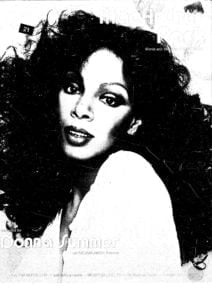
Browse in the Library:
Or browse in the categories menus & download the Library Catalog PDF:
Biography: From Boston Choir to Global Icon
Early Life and Beginnings (1948-1974)
LaDonna Adrian Gaines was born on December 31, 1948, in Boston, Massachusetts. The third of seven children in a devout Christian family, her musical journey began in the church choir, where she first discovered the power of her voice. A pivotal moment occurred in her teens when she was told she could not replace a singer who had dropped out of a school production; instead of accepting this, she auditioned and won the role, proving her determination and talent.

Inspired by the success of Mahalia Jackson and later, Janis Joplin, she left Boston after high school to join a touring production of the musical Hair in Germany. This move marked the beginning of her European sojourn. She settled in Germany, learning the language and performing in various musicals, including Godspell and Show Boat. It was in Munich that she met and married Austrian actor Helmut Sommer; though the marriage was short-lived, she kept a variation of his surname, thus becoming “Donna Summer.”
Her big break came in 1974 when she met Italian producers Giorgio Moroder and Pete Bellotte while recording demo tapes. They recognized the unique quality of her voice—a soulful belt that could also convey a vulnerable, girlish tenderness.
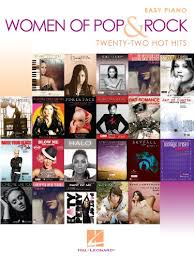
Meteoric Rise: The Disco Era (1975-1979)
The collaboration with Moroder and Bellotte produced a demo for a song called “Love to Love You Baby.” The story is now legendary: Casablanca Records president Neil Bogart was so enthralled by the sensual, moaning vocals over a hypnotic rhythm that he requested an extended version for discotheques. The resulting 17-minute opus, with Summer’s breathy, multi-orgasmic vocals, became a worldwide sensation in 1975. It was a scandalous and revolutionary record, placing female sexual pleasure at the forefront of popular music and establishing the template for the extended 12-inch single that would define the disco era.
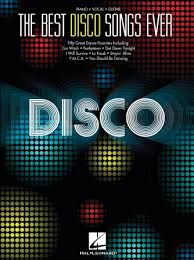
This success was followed by a string of landmark albums and singles that cemented her status: A Love Trilogy (1976), Four Seasons of Love (1976), and I Remember Yesterday (1977). The latter contained “I Feel Love,” a track that would change the course of popular music. While the rest of the album explored past styles of dance music, “I Feel Love” was a vision of the future. As Brian Eno reportedly told David Bowie at the time, “I have heard the sound of the future… This is going to change the sound of club music for the next fifteen years.” He was underestimating its impact.
The pinnacle of this period was the 1977 double-LP Once Upon a Time, a full-length conceptual fairy tale set to a disco beat, showcasing her storytelling prowess. Her fame reached a crescendo with 1978’s Live and More, which featured the monumental “MacArthur Park Suite,” and 1979’s Bad Girls, a rock-influenced disco masterpiece that spawned the number-one hits “Hot Stuff” and the iconic “Bad Girls,” as well as the heartfelt “Dim All the Lights.” That same year, she also released the prolific On the Radio: Greatest Hits Volumes I & II. Donna Summer was arguably the biggest female artist in the world.
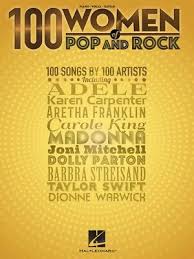
Transition and Spirituality (1980-1989)
The 1980s began with controversy. The disco backlash was in full swing, and Summer, its biggest star, faced a severe commercial downturn. A born-again Christian, she made comments that were interpreted as her condemning the disco lifestyle and even suggesting she regretted “Love to Love You Baby.” While she later clarified her words were misconstrued, the damage was done.
Artistically, she navigated the new decade with savvy. She left Casablanca for Geffen Records and began working with producer Quincy Jones on her 1982 self-titled album, which yielded the R&B smash “Love Is in Control (Finger on the Trigger).” Her most significant 80s success came with the help of producer Michael Omartian. The 1983 album She Works Hard for the Money became a feminist anthem and its title track a permanent fixture in pop culture. Another Omartian-produced hit, 1989’s “This Time I Know It’s for Real,” written with the British production team Stock Aitken Waterman, marked a triumphant return to the top of the charts.
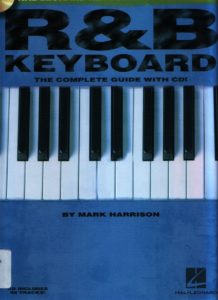
Later Career and Legacy (1990-2012)
Summer continued to record and perform throughout the 1990s and 2000s, focusing more on adult contemporary and gospel music. She won a Grammy in 1998 for Best Dance Recording for “Carry On.” Her influence was consistently acknowledged by a new generation of artists who sampled her work or cited her as an inspiration.
In 2008, she released Crayons, her first full-length studio album of new material in 17 years, which was well-received and proved her voice had lost none of its power. Donna Summer passed away on May 17, 2012, after a battle with lung cancer. The outpouring of grief from across the music industry was a testament to her profound impact. She was posthumously inducted into the Rock and Roll Hall of Fame in 2013.
 (88) (PF)-212x300.jpg)
Musical Style and Vocal Prowess
Donna Summer’s style is a mosaic of genres: disco, funk, soul, rock, gospel, R&B, and electronic music. Her voice was her primary instrument, and its characteristics defined her sound:
- Power and Range: She possessed a formidable soprano range, capable of powerful, soaring belts (heard in “Last Dance” and “MacArthur Park”) and delicate, airy head tones.
- Dramatic Expression: Her background in musical theater informed her performances. She didn’t just sing a song; she acted it. This is most evident in her narrative epics like “Once Upon a Time” and “State of Independence,” where she takes the listener on an emotional journey.
- Agility and Improvisation: While not a jazz scat singer, Summer was a master of melodic improvisation, especially in her live performances and the extended versions of her songs. Her ad-libs were not mere vocal pyrotechnics; they were integral to the emotional build-up of a track. In the long fade-out of “Try Me, I Know We Can Make It,” her repeated, increasingly fervent pleas of “Try me!” create a hypnotic, almost spiritual fervor.
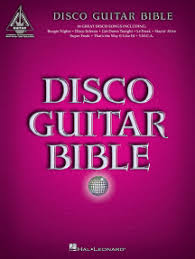
Improvisational Licks and Techniques:
Her improvisational style was deeply rooted in gospel and soul. Key techniques included:
- Melodic Variation: Repeating a phrase with slight melodic alterations each time to build intensity.
- Call and Response: Engaging in a dialogue with her own backing vocals or the instrumental hook.
- The “Gospel Climax”: Using rhythmic delays, shouts, and soaring melismas to reach a song’s emotional peak. Listen to the final minutes of “My Baby Understands” or her live performance of “Last Dance” for masterclasses in this technique.
- Dynamic Control: Shifting suddenly from a powerful belt to a intimate, breathy whisper for dramatic effect, a technique used to perfection in “Love to Love You Baby.”
Chord Progressions and Musical Harmony
The harmonic foundation of Donna Summer’s biggest hits, particularly those with Giorgio Moroder, is often deceptively simple. Disco’s power lay in rhythm and production, not complex harmony.
- The “I Feel Love” Revolution: The harmony of “I Feel Love” is arguably its most radical element. While most disco was based in soul and funk, using extended chords (7ths, 9ths) and cyclical patterns common in R&B (e.g., I – iii – IV – V, or variations of ii – V – I), “I Feel Love” stripped everything back. It is built almost entirely on a single, static Bbm chord. The sense of movement and euphoria is created not by chord changes, but by the interlocking sequencer patterns, the build and release of tension through arrangement, and the melody itself. This rejection of traditional functional harmony was its genius, creating a hypnotic, trance-like state that would become the basis for techno and house music.
- Classic Disco Progressions: Her other hits use more familiar, but effective, progressions.
- “Hot Stuff” uses a driving, blues-rock progression in A minor: | Am | G | D | D |. This simple, powerful loop gives the song its rock edge.
- “Bad Girls” is built on a classic funk groove centered around a C7 chord, with subtle harmonic movement provided by the bass line.
- “Last Dance” (written by Paul Jabara) uses a more theatrical, classic pop song structure. The verse uses a descending progression (Fmaj7 – Em7 – Dm7 – C), while the famous chorus is a powerful release to the IV chord (B♭), before resolving to the I (F). This creates a feeling of triumphant resolution perfect for the song’s theme.
The sophistication in Moroder/Bellotte/Summer productions often came from the arrangement: the layering of synth basslines, string pads, and rhythmic guitars to create a rich, immersive harmonic tapestry, even over simple chords.
Cooperation with Other Artists
Donna Summer’s collaborations were pivotal to her career.
- Giorgio Moroder and Pete Bellotte: This was her most important creative partnership. Moroder, the visionary producer, and Bellotte, the skilled musician and arranger, crafted the sonic landscapes that allowed Summer’s voice to shine. Together, they created the signature “Munich Machine” sound.
- Barbra Streisand: Their 1979 duet “No More Tears (Enough Is Enough)” was a monumental event, pairing the Queen of Disco with the Queen of Broadway. The song was a powerhouse, showcasing both singers’ formidable pipes in a thrilling call-and-response battle.
- Quincy Jones: Her move to Geffen Records and collaboration with the legendary producer Q on Donna Summer (1982) was an attempt to smoothly transition into the 1980s R&B and pop landscape.
- Bruce Sudano and Michael Omartian: Sudano, a member of the Brooklyn Dreams (with whom she duetted on “Heaven Knows”) later became her husband. His influence, along with producer Omartian, was key in her 1980s Christian-inspired pop direction, leading to hits like “She Works Hard for the Money.”
- Stock Aitken Waterman: The collaboration with the hit-making British team for “This Time I Know It’s for Real” showed her ability to adapt to the high-energy, synth-pop sound of the late 80s.
Influences and Legacy
Influences on Donna Summer: Her early influences were gospel giants like Mahalia Jackson, the raw soul of Janis Joplin, and the emotive delivery of soul singers like Diana Ross.
Donna Summer’s Legacy: Her impact is immeasurable.
- Electronic Music: “I Feel Love” is the foundational text for electronic dance music. It directly inspired the synth-pop of the Human League and Depeche Mode, the house music of Frankie Knuckles, and the techno of Juan Atkins. Every DJ who creates a build-up owes a debt to this track.
- Pop and R&B: Artists from Madonna to Beyoncé, Kylie Minogue to Rihanna, have cited her as an influence. Her blend of dance-floor energy with pop melody and soulful vocals is the blueprint for modern pop.
- The Art of the Producer-Artist Partnership: Her work with Moroder set a precedent for the modern producer-as-auteur model, seen in partnerships like Calvin Harris and Rihanna.
- Female Agency in Pop: From the sexual agency of “Love to Love You Baby” to the working-class feminism of “She Works Hard for the Money,” Summer presented multifaceted, powerful images of womanhood.
Works and Filmography
While primarily a recording artist, Summer had a presence in film and television.
Filmography:
- Thank God It’s Friday (1978): She made a cameo appearance performing the Oscar-winning “Last Dance.”
- The 1980 Grammys (1980): A legendary, oft-bootlegged live medley.
- The 1989 American Music Awards: Performance of “This Time I Know It’s for Real.”
She also provided songs for numerous soundtracks, most notably “The Deep (Down, Deep Inside)” for the film The Deep (1977) and the theme song for the 1980s television show Who’s the Boss?.
Discography (Selective)
- Lady of the Night (1974) – Released only in Europe
- Love to Love You Baby (1975)
- A Love Trilogy (1976)
- Four Seasons of Love (1976)
- I Remember Yesterday (1977)
- Once Upon a Time (1977)
- Live and More (1978)
- Bad Girls (1979)
- On the Radio: Greatest Hits Volumes I & II (1979)
- The Wanderer (1980)
- Donna Summer (1982)
- She Works Hard for the Money (1983)
- Cats Without Claws (1984)
- All Systems Go (1987)
- Another Place and Time (1989)
- Mistaken Identity (1991)
- Crayons (2008)
Most Known Compositions and Performances
- “I Feel Love” (1977): Her most revolutionary work. A seismic shift in music history.
- “Love to Love You Baby” (1975): The record that started it all, a daring and sensual masterpiece.
- “Bad Girls” (1979): An anthem of female empowerment and streetwise cool, with its unforgettable “toot-toot, hey, beep-beep” hook.
- “Hot Stuff” (1979): A fiery fusion of disco and rock guitar that won her a Grammy for Best Female Rock Vocal Performance.
- “Last Dance” (1978): The ultimate closing-time anthem, an Oscar-winning song of hope and celebration.
- “MacArthur Park” (1978): A stunning, suite-length interpretation that transformed a quirky ballad into a disco opera.
- “She Works Hard for the Money” (1983): A defining 80s pop anthem that celebrated the resilience of working women.
- “No More Tears (Enough Is Enough)” (with Barbra Streisand, 1979): The ultimate diva duet.
- “Dim All the Lights” (1979): A soulful, perfectly crafted disco track that she famously fought to record herself.
- “On the Radio” (1979): A poignant ballad-turned-dance track about love and loss, capturing the essence of an era.
Donna Summer’s story is one of unparalleled success, artistic evolution, and profound influence. She was the voice of a generation’s Saturday night fever, but she was also a seeker, a storyteller, and a pioneer. Her music provided the soundtrack for liberation on the dance floor and continues to inspire the creation of the future’s sound. The Queen’s reign is far from over.
Donna Summer — Live Hot Stuff Video HQ
Listen to Donna Summer on Spotify
“Hot Stuff”: The Rock-Disco Hybrid That Set the World on Fire
“Hot Stuff” is more than just a hit song; it’s a cultural artifact. Released at the absolute zenith of the disco era, it simultaneously represented the genre’s peak and its bold evolution. It was Donna Summer, the “Queen of Disco,” fearlessly incorporating the gritty, masculine energy of rock and roll into her sound, creating a track that was both sexually assertive and musically groundbreaking. It wasn’t just a dance floor filler; it was a statement of intent.
I. Historical Context and Creation
The Album: Bad Girls
“Hot Stuff” was the lead single from Donna Summer’s monumental 1979 double album, Bad Girls. This album was a conceptual masterpiece, portraying a narrative of street life and female empowerment, a far cry from the ethereal fantasies of her earlier works like Once Upon a Time. The title track, “Bad Girls,” with its “toot-toot, hey, beep-beep” hook, celebrated sex workers, while other tracks explored themes of loneliness (“Sunset People”) and desire (“Dim All the Lights”).
Summer was eager to shed the passive, “love to love you” image and assert more creative control. Bad Girls was her vehicle for this transformation, and “Hot Stuff” was its explosive engine.
The Songwriting and Production Trio
The song was written by the core team behind her biggest successes: Giorgio Moroder (music), Pete Bellotte (music), and Harold Faltermeyer (then a keyboardist and programmer in Moroder’s studio). However, the sonic direction was a deliberate shift.
Moroder, a visionary producer, recognized the rising tide of rock music on the radio and the initial rumblings of the “disco sucks” backlash. He proposed an idea: “Let’s do a disco song, but with a rock guitar.” The goal was to create a hybrid that would be undeniable on both the dance floor and the airwaves, bridging the gap between two seemingly opposed audiences.
The Infamous Intro
The creation of the song’s signature opening is the stuff of legend. As the story goes, Moroder and Faltermeyer were working with a new drum machine, the Linndrum LM-1 (or possibly a predecessor). They programmed a simple, powerful beat. Faltermeyer, perhaps accidentally or experimentally, hit the “fill” button repeatedly, creating the iconic, stuttering, syncopated drum roll that introduces the track. Instead of deleting it, they recognized its unique, tension-building power and kept it. That decision gave “Hot Stuff” one of the most recognizable intros in popular music history.
II. Musical Analysis: Deconstructing the Hybrid
“Hot Stuff” is a masterclass in blending seemingly disparate elements into a cohesive and powerful whole.
1. Rhythm and Groove:
- Foundation: The track is built on a solid, four-on-the-floor disco beat. The kick drum hits every quarter note, providing the unwavering pulse essential for dancing.
- The “Rock” Element: Where it diverges from standard disco is in the hi-hat pattern. Instead of the constant, open hi-hats of pure disco, “Hot Stuff” uses a tighter, more rhythmically complex pattern that leans closer to rock or funk. The snare drum hits on beats two and four are crisp and powerful, adding to the rock feel.
- The Intro Fill: As mentioned, the introductory drum machine fill is crucial. It’s not a natural-sounding acoustic fill; it’s mechanical, urgent, and repetitive (t-k-t-t-k-t-t-k-t-t), immediately setting a mood of anticipation and mechanical energy.
2. Harmonic Structure (Chord Progressions):
The harmony of “Hot Stuff” is brilliantly simple and effective, drawing from blues-rock traditions. The entire song is based on a cyclical, three-chord vamp in the key of A minor.
- Verse/Chorus Progression: | Am | G | D | D |
- Am (i): The tonal center. Establishes a minor-key, slightly dark, and driving mood.
- G (VII): A common move in rock and blues. This chord creates a sense of release or lift away from the tonic.
- D (V): The dominant chord. In a minor key, this chord (often major) creates strong tension, demanding resolution back to the tonic (Am). The fact that it’s held for two bars amplifies this tension, making the return to Am feel powerful and satisfying.
This i-VII-V progression is a staple of hard rock and blues (think “L.A. Woman” by The Doors). Its use here is what gives “Hot Stuff” its undeniable rock credibility. There is no complex jazz harmony; its power comes from the primal, cyclical nature of the riff.
3. Instrumentation and Texture:
This is where the fusion truly comes to life.
- The Guitar Riff: The most prominent rock element is the scorching electric guitar riff, played by session musician Jeff “Skunk” Baxter (formerly of Steely Dan and The Doobie Brothers). The riff is a simple, bluesy phrase doubled with a talk box, giving it a gritty, vocal-like quality. It answers Donna’s vocal lines and provides a constant, searing texture throughout the song. This was a radical departure from the slick, rhythmic “chucking” guitars of typical disco.
- The Bass: The bassline, likely played by Sylvester Levay or another session player, is a masterpiece of funk-rock. It’s not a busy, melodic line but a powerful, root-note-driven anchor that locks in perfectly with the kick drum, emphasizing the chord changes with a propulsive force.
- Keyboards/Synths: While the guitar takes the lead, Moroder’s signature synthesizers are still present. They provide atmospheric pads and the distinctive sequencer-like arpeggios that can be heard in the background, especially during the intro and breaks, connecting the track to his electronic legacy.
4. Vocal Performance:
Donna Summer’s vocal is the glue that holds the rock-disco fusion together. She completely sheds the breathy, ethereal persona of “Love to Love You Baby.”
- Delivery: She sings with a raw, assertive, almost aggressive belt. There’s a husky, soulful quality to her voice that conveys confidence and desire. She’s not passively waiting; she’s actively demanding “hot stuff” tonight.
- Lyrics: The lyrics are direct and unapologetic about female sexuality. Lines like “I need some hot stuff, baby, tonight / I want some hot stuff, baby, tonight” and “Gotta have some love, gotta have some love / Gotta have some love, tonight” are simple, repetitive, and powerful. They are a declaration of need, removing the passive objectification often present in pop music.
- Structure: The song follows a classic verse-chorus format, but it’s the ad-libs and improvisations in the long coda (outro) where Summer truly shines. Her repeated cries of “Hot stuff!” and “Lookin’ for some hot stuff!” become more intense and frantic, building energy over the relentless groove until the final, explosive cutoff.
III. Success, Impact, and Legacy
Chart Performance and Accolades:
- “Hot Stuff” was a monumental commercial success. It reached #1 on the Billboard Hot 100 in July 1979, where it stayed for three weeks.
- Crucially, it also topped the Billboard Hot Dance Club Play chart, proving its dominance across genres.
- Perhaps most significantly, in 1980, Donna Summer won the Grammy Award for Best Female Rock Vocal Performance for “Hot Stuff.” This award was a testament to the song’s successful fusion. She was a disco artist winning a rock Grammy, a fact that broke down musical barriers and legitimized the artistic merit of dance music.
Cultural Impact:
- Bridging the Divide: At a time when radio formats were becoming segregated and the disco backlash was turning violent (e.g., the Disco Demolition Night in Chicago occurred just two months after “Hot Stuff” hit #1), the song managed to find a home on both pop and rock stations. It was too rock for disco purists and too disco for rock purists, but its quality made it irresistible to the masses.
- Female Empowerment: “Hot Stuff” presented a new kind of female protagonist in pop music: one who was openly, confidently, and aggressively sexual without being submissive. This was a powerful image that paved the way for future artists from Madonna to Beyoncé.
Legacy and Enduring Influence:
- The Rock-Disco Blueprint: “Hot Stuff” directly influenced a wave of rock-disco and post-disco hits from the likes of Blondie (“Heart of Glass”) and The Rolling Stones (“Miss You”).
- Sampling and Covers: The song’s iconic intro and groove have been sampled by numerous hip-hop and electronic artists, a testament to its timeless funk.
- Film and Television: It has been featured in countless films, most memorably in the opening sequence of The Full Monty (1997), where its driving energy perfectly complements the humorous and determined spirit of the characters.
“Hot Stuff” is not merely a great Donna Summer song; it is a landmark recording that captures a specific, volatile moment in music history. It is the sound of an artist and a genre at their most confident, daring to evolve and incorporate outside influences to spectacular effect. By fusing the relentless beat of disco with the swagger of blues-rock guitar and a vocal performance of raw power and desire, Giorgio Moroder, Pete Bellotte, and Donna Summer created a timeless anthem. It broke down genre walls, challenged perceptions of female sexuality in pop, and proved that on the dance floor, a great groove—whether from a synth or a guitar—is ultimately what matters.
Browse in the Library:
Or browse in the categories menus & download the Library Catalog PDF:
